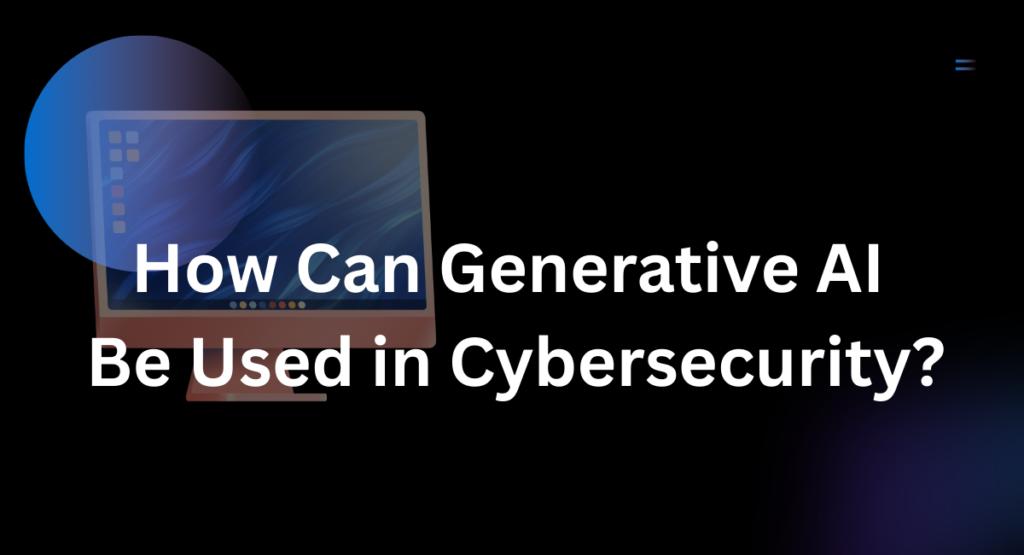In a world that is increasingly connected via digital networks, cyber-attacks are becoming more complex and persistent. They are also more difficult to spot. Cybersecurity professionals have to contend with an ever-changing environment where threats evolve quicker than they are able to react. This is where the potential of generative AI comes into play. How can the power of generative AI be applied to cybersecurity in a manner that helps make our digital lives more secure?
Let’s discuss it in easy terms, using reasonable illustrations, clear and concise explanations and a step-by-step process. In this article, we will not just address this issue, but will provide you with an understanding of the ways AI for cybersecurity could be used for your benefit.
How is Generative AI Being Used in Cyber Security?
To better understand how this happens we should begin with an example.
Anecdote: A few months ago a small company in the field of financial services was hit by a cyber attack that was unprovoked. The company’s systems were compromised even though the antivirus software displayed no sign of threat. After enlisting security experts and analyzing the breach, they found that it was a new type of malware that had not previously been discovered. Traditional tools failed due to the fact that they rely on signatures that were known. If they utilized generative AI the results could have turned out differently.
Generative AI is able to detect previously undiscovered dangers. It is able to learn from evidence, creates new threats, and can even help cybersecurity teams patch vulnerabilities prior to them being exploited.
Here’s how it’s aiding:
1. Threat Detection and Prediction
Utilizing models that have been trained on huge data sets and generative AI detects unusual behavior that are not normal for a system. These anomalies might indicate a cyber-attack. For example the case where users suddenly start downloading large quantities of data in the late hours, AI flags it.
- MIT Researchers from MIT have already shown the way AI models can identify ransomware with remarkable precision.
2. Automated Incident Response
If a cyberattack occurs the speed of response is crucial. Generative AI is able to generate automated responses in real-time, identifying the affected system, reversing modifications, or even advising administrators.
- Imagine it as an electronic fire extinguisher that will activate when smoke is recognized.
3. Malware Creation and Defense Simulation
There’s an irony: Generative Artificial Intelligence can simulate the way hackers can create malware. Through the creation of potential threats in a controlled setting, cybersecurity teams can be prepared for attacks in real-time.
- IBM’s DeepLocker is an excellent illustration for how AI can mimic malware and assist in the design of strategies to defend against it.
4. Data Privacy and Risk Assessment
Generative AI aids organizations to anonymize sensitive data as well as perform risk assessments on a massive scale. It is able to make up scenarios for data security breaches, and reveal weaknesses in the infrastructure.
How Can AI Be Used for Cyber Security?
After we’ve discovered the ways in which generative AI is being used to improve cybersecurity, let’s look at the ways AI can be applied to cyber security using practical techniques.
A Step-by-Step Guide:
Step 1: Train AI Models
Then feed the data into deep learning models, so that they can learn normal as opposed to. unusual behavior.
Step 2: Real-Time Monitoring
Implement AI devices to observe the systems continuously, alerting any deviation from the normal.
Step 3: Automated Threat Mitigation
Incorporate AI to your firewall or endpoint protection tools to let it react automatically upon notifications.
Step 4: Post-Attack Forensics
Utilize AI to conduct deep dives into why an incident occurred and the person responsible and how it could be avoided in the future.
Real-Life Example:
Netflix makes use of AI not only to suggest shows, but also to track patterns in streaming. If hackers compromise an account of a user and begins streaming from a different site, the system will flag it and stop access.
Bonus Tip:
Conducting a periodic security audit is crucial to make sure that AI models are using the most current and accurate information.
What is Artificial Intelligence Used in Cyber Crime?
Unfortunately, the criminals are employing AI as well. This is why staying ahead of the game is vital.
1. AI-Driven Phishing
Hackers make use of AI to create very convincing phishing emails, often imitating writing styles with natural processing of language (NLP).
- The Checkpoint discovered hackers used ChatGPT to design phishing scams.
2. Deep Fake Attacks
Cybercriminals use AI to create fake videos and audios that impersonate CEOs and important decision makers to trick employees into transferring money.
3. AI-Powered Malware
Like DeepLocker, AI malware can be hidden until certain conditions are met, such as the appearance of the target’s face on a webcam.
What You Can Do:
- Make sure employees are aware of AI-related threats.
- Use AI-powered antivirus programs.
- Allow multi-factor authentication and biometric logins.
Why You Should Act Now
If you’re still pondering what can an intelligent AI be employed for cybersecurity purposes, this is the ultimate point:
Generative AI isn’t just a tool for cybersecurity, it also transforms it. It is proactive instead of reactive and proactive as opposed to passive.
Similar to an intelligent assistant who knows your routines and offers assistance when you need it, the generative AI of cybersecurity keeps an inch ahead of the hackers.
There’s no need to be an expert in tech to gain. No matter if you’re a small-business owner or a professional in cybersecurity, adopting AI-based security tools is vital.
Need assistance? Begin with a cybersecurity assessment to determine the state of your cybersecurity. Then, you can investigate custom AI-driven tools for protection.
Conclusion
How can generative AI be utilized in cybersecurity?
In simple terms, it could:
- Be able to predict and identify new threats.
- Automate incident response.
- Prevent and simulate malware.
- Protect data privacy.
- Perform smarter audits.
It’s not only the security of the future. It’s now and you can leverage it right now.


